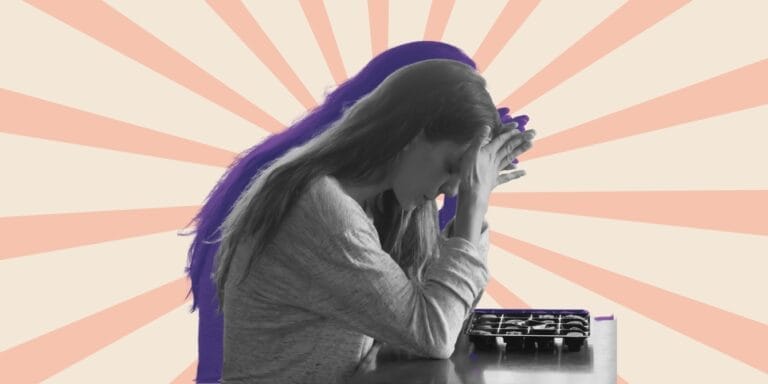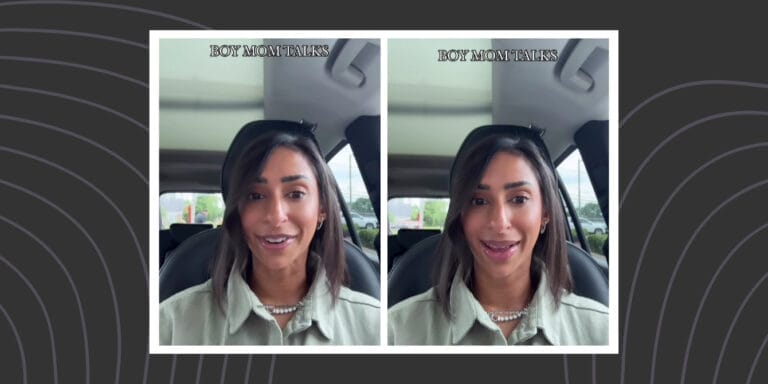This film sheds human light on the surrogacy boom in the U.S.—specifically, in Boise, Idaho

Made in Boise compassionately tracks four women navigating surrogacy—and it's well worth streaming.
 Jenni MorelloIt is worth acknowledging that commercial surrogacy remains a divisive issue the world over, and was notably banned earlier this year in India due to exploitation concerns. This particular film does not seek to tell a story of exploitation. By contrast, these stories seem to present a cross section of better-case scenarios—these are empowered women making a very personal choice, and they all ultimately share the drive of helping someone else become a parent.
One of the most powerful elements of this film is how Aala alludes to the remarkable web of female support found in this particular surrogacy community. There’s Nicole, who runs the surrogacy agency and is seemingly always fielding phone calls from surrogates, offering support, checking in on them throughout pregnancy and postpartum. There’s a surrogacy support group where carriers find normalcy and connection, joking about how they love to be pregnant but don’t want to raise any more kids, or how hard it can be to explain the carrier role to their own mothers. We see female lawyers and advocates helping surrogates navigate the logistical complications of their contracts.
When Aala first began researching the story, this web of women nurturing and supporting each other to make sure all parties are protected immediately came into sharp relief, drawing her further in. (She also intentionally staffed the film with an all-female crew, extending that web of female support behind the camera, as well.)
“That was really why I wanted it to be told from the point of view of the surrogates. Because one—I feel like their role is very misunderstood. Two—I wanted to have these female protagonists that make you think about these complicated decisions. And they are surrounded by these incredibly supportive female characters… that was just so inspiring to me.”
For the first year of production, Beth didn’t have funding, a restriction that forced her to do a lot of the shooting herself, often using borrowed cameras. But this stripped-down approach was also a strategic choice, and one that I believe impacts the outcome of the film in beautiful, emotionally-resonant ways. Her minimalist shoot profile enabled her to capture such intimate moments in intimate spaces—in family homes, doctor checkups, during the otherwise-private moments of in vitro fertilization and birth. (The film’s intimate access is, of course, also a testament to the trust these women gave Aala, putting their stories in her capable hands).
Jenni MorelloIt is worth acknowledging that commercial surrogacy remains a divisive issue the world over, and was notably banned earlier this year in India due to exploitation concerns. This particular film does not seek to tell a story of exploitation. By contrast, these stories seem to present a cross section of better-case scenarios—these are empowered women making a very personal choice, and they all ultimately share the drive of helping someone else become a parent.
One of the most powerful elements of this film is how Aala alludes to the remarkable web of female support found in this particular surrogacy community. There’s Nicole, who runs the surrogacy agency and is seemingly always fielding phone calls from surrogates, offering support, checking in on them throughout pregnancy and postpartum. There’s a surrogacy support group where carriers find normalcy and connection, joking about how they love to be pregnant but don’t want to raise any more kids, or how hard it can be to explain the carrier role to their own mothers. We see female lawyers and advocates helping surrogates navigate the logistical complications of their contracts.
When Aala first began researching the story, this web of women nurturing and supporting each other to make sure all parties are protected immediately came into sharp relief, drawing her further in. (She also intentionally staffed the film with an all-female crew, extending that web of female support behind the camera, as well.)
“That was really why I wanted it to be told from the point of view of the surrogates. Because one—I feel like their role is very misunderstood. Two—I wanted to have these female protagonists that make you think about these complicated decisions. And they are surrounded by these incredibly supportive female characters… that was just so inspiring to me.”
For the first year of production, Beth didn’t have funding, a restriction that forced her to do a lot of the shooting herself, often using borrowed cameras. But this stripped-down approach was also a strategic choice, and one that I believe impacts the outcome of the film in beautiful, emotionally-resonant ways. Her minimalist shoot profile enabled her to capture such intimate moments in intimate spaces—in family homes, doctor checkups, during the otherwise-private moments of in vitro fertilization and birth. (The film’s intimate access is, of course, also a testament to the trust these women gave Aala, putting their stories in her capable hands).
 Crystal KulackIn one particularly poignant scene, surrogate Sammie is recovering from the C-section birth of the child she carried, while parents David and Todd excitedly (and a bit nervously, as is par for the course of any new parent) have skin-to-skin snuggles with their newborn in a nearby room. The moment brought me back to my own postpartum experiences, as I tried to imagine how it might feel to be seated in post-birth recovery when the baby you carried and delivered wasn’t, in fact, yours.
Sammie tells the camera about how she felt a sudden wave of anxiety before the C-section procedure began. But lying on the operating table, she was able to calm herself by visualizing how David and Todd had played and bonded with her son on a playground just the day prior. By focusing on the trust she held that they were going to be great parents, she felt a subsequent wave of happiness and calm as she prepared to give birth.
As a viewer, I felt a comparable emotional reaction watching these two fathers finally meet the baby they’d dreamed of for the first time on screen. On a personal level, it was revelatory for me to acknowledge that Sammie’s primary emotional connection seemed to be to the parents, rather than to the baby she carried for them. Through this process, these recent strangers had forged a unique, real and beautiful bond.
Crystal KulackIn one particularly poignant scene, surrogate Sammie is recovering from the C-section birth of the child she carried, while parents David and Todd excitedly (and a bit nervously, as is par for the course of any new parent) have skin-to-skin snuggles with their newborn in a nearby room. The moment brought me back to my own postpartum experiences, as I tried to imagine how it might feel to be seated in post-birth recovery when the baby you carried and delivered wasn’t, in fact, yours.
Sammie tells the camera about how she felt a sudden wave of anxiety before the C-section procedure began. But lying on the operating table, she was able to calm herself by visualizing how David and Todd had played and bonded with her son on a playground just the day prior. By focusing on the trust she held that they were going to be great parents, she felt a subsequent wave of happiness and calm as she prepared to give birth.
As a viewer, I felt a comparable emotional reaction watching these two fathers finally meet the baby they’d dreamed of for the first time on screen. On a personal level, it was revelatory for me to acknowledge that Sammie’s primary emotional connection seemed to be to the parents, rather than to the baby she carried for them. Through this process, these recent strangers had forged a unique, real and beautiful bond.
 Crystal KulackIn speaking about why she wanted to help shepherd this film to screen, producer Beth Levison explained how she was drawn to Beth Aala’s clear vision for the film—noting the warm, inviting, and at times playful tone she crafted. (It’s easy to grasp what Levison refers to. I especially enjoyed the buffer-bar graphics denoting how far along a woman is in her pregnancy, and the birds-eye flyover shots that seemed to emphasize an ordered, idyllic suburban oasis of homes, lawns and beautiful Boise vistas. These floating shots were a nice visual counterpoint to the complex human stories at play on the ground).
Levison added, “If this film is one that can get people talking about surrogacy and thinking more deeply about it—thinking about legislation, thinking about how we protect women, how we look out for unique families and think about them and provide for them, then I think it’s really important. I think there’s a tendency for us as a culture maybe to emphasize or talk about ‘natural’ births—whether that’s the correct phrase or not—but you know, the narrative is very much about people having their own babies. And if this film can change that narrative, I think that’s really important, because I think there are many other narratives at play in 2019.”
In an early scene in the film that takes place in The Host of Possibilities agency office, there’s a slightly-lingering detail shot on a piece of wall decor—an Idaho state map, striped in rainbow colors, inscribed with the beautiful words, “Ultimately, the one thing that makes a family is love.”
This positive sentiment is woven throughout the film, which left me thinking about how the life-changing experience of becoming a parent can create a universal thread of connection to other humans who are parents, too—and how there truly are myriad ways to form your family.
“Made in Boise” is a sensitive, woman-centered and thought-provoking exploration of one of those ways.
Crystal KulackIn speaking about why she wanted to help shepherd this film to screen, producer Beth Levison explained how she was drawn to Beth Aala’s clear vision for the film—noting the warm, inviting, and at times playful tone she crafted. (It’s easy to grasp what Levison refers to. I especially enjoyed the buffer-bar graphics denoting how far along a woman is in her pregnancy, and the birds-eye flyover shots that seemed to emphasize an ordered, idyllic suburban oasis of homes, lawns and beautiful Boise vistas. These floating shots were a nice visual counterpoint to the complex human stories at play on the ground).
Levison added, “If this film is one that can get people talking about surrogacy and thinking more deeply about it—thinking about legislation, thinking about how we protect women, how we look out for unique families and think about them and provide for them, then I think it’s really important. I think there’s a tendency for us as a culture maybe to emphasize or talk about ‘natural’ births—whether that’s the correct phrase or not—but you know, the narrative is very much about people having their own babies. And if this film can change that narrative, I think that’s really important, because I think there are many other narratives at play in 2019.”
In an early scene in the film that takes place in The Host of Possibilities agency office, there’s a slightly-lingering detail shot on a piece of wall decor—an Idaho state map, striped in rainbow colors, inscribed with the beautiful words, “Ultimately, the one thing that makes a family is love.”
This positive sentiment is woven throughout the film, which left me thinking about how the life-changing experience of becoming a parent can create a universal thread of connection to other humans who are parents, too—and how there truly are myriad ways to form your family.
“Made in Boise” is a sensitive, woman-centered and thought-provoking exploration of one of those ways.


































